We’ll see you in there.
Connect to customize your food & drink discovery.
By signing up you agree to our Terms of Service and Privacy Policy.
French
The Rosebud

Most people’s association with “Rosebud” is as the famous last word uttered by Orson Welles’ larger-than-life protagonist, Charles Foster Kane, on his deathbed, in the 1941 film classic, Citizen Kane. For those out of the loop, “Rosebud” was the name of Kane’s beloved childhood sled. Over time, as the film became embedded in the cultural consciousness, “Rosebud” came to signify a type of innocent, blissful happiness. The association is so widespread that it’s not surprising that Amira Becarevic and Justin Cheung, the wife-and-husband team behind the Beaches’ diner, Mira Mira, put in on their list of possible names when they decided to open a second, more elevated restaurant that doubled as a wine bar.
The couple had already found the ideal space: a long-abandoned, but downright atmospheric diner, the Kingsbrae, which sat upon the corner of King East and Sumach, in Corktown. In truth, Bevarevic and Cheung had been eyeing the locale, on the ground floor of a 100-year-old brick building, for close to 15 years. In the interim, they had plenty of time to research the Kingsbrae’s history, which is how they stumbled onto a photo of celebrated homegrown actor Eugene Levy shooting a 2005 film (The Man) inside the diner.
That Levy went on to star in the acclaimed series, Schitt’s Creek, where his character, Johnny Rose, takes over an abandoned motel only to rechristen it “Rosebud” seemed more than mere coincidence. Becarevic and Cheung took it as a sign and promptly adopted the name (that said, there’s not a Rosebud sign in sight; in a winking homage to the past, the owners decided to leave the facade’s original “Kingsbrae” intact).
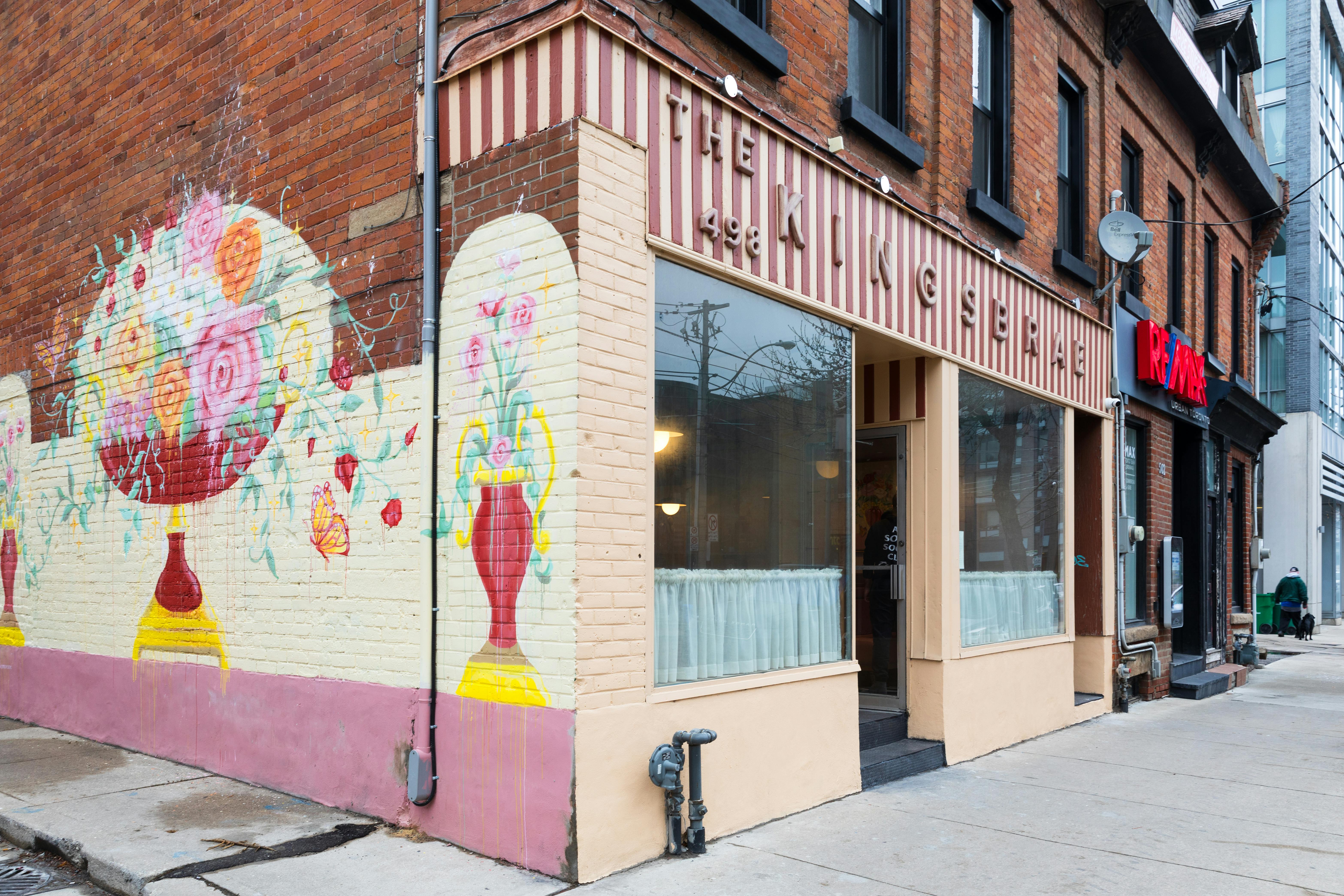
Its windows gazing onto King Street, The Rosebud’s interior also retains vestiges of the past. Black-and-white checkerboard tiles (replicas of the originals) cover the floor and near the entrance, pride of place is given to a retro display refrigerator, a throwback to its diner days. Intimate and elegant, the romantically-lit dining room is discretely, but purposely, feminine, with rose suede banquettes and walnut panelling. Charming paintings by local artist (and former Mira Mira waitperson) Jules Monson, depict flora and fauna (a tiger and a piano-playing cat) in suave pastel tones (Monson is also responsible for the striking, on-theme mural on the side of the building of budding roses in bloom).
Lined with high swivel chairs, a glossy marble bar bisects the room, framing the open kitchen and underscoring the fact that The Rosebud is equal parts restaurant and wine bar. As general manager, Teandra Tuhkunen, points out, “The theory behind it is that you can come in and have a full service, five-course meal with a couple of special bottles we can pair. But you can also just come in to read a book or talk, have a bowl of pasta and a glass of wine, and then come in again a couple of weeks later, knowing that we’ll have something new for you to try.”

With a large ratio of staff to diners (and drinkers), guests are encouraged to revel in the intimacy of the space. They chat with the chefs as they prepare the food, engage with the waitstaff and listen to Tuhkunen and her colleagues regale them with tales of offbeat and off-the-beaten-track wines and their makers.
Some have categorized The Rosebud’s menu as “French,” but it’s actually, excitingly, more complex. In addition to classical French culinary training, head chef Jeffrey Yap previously worked at both Scaramouche and Faim de Loup. His family is Chinese, but because his parents were born in the Philippines, he grew up savouring the best of both these Asian culinary worlds. Leery of categories – “I want room to play around,” – when pressed, he describes the food as “half French, a quarter Asian and a quarter miscellaneous.”

Although Rosebud’s tight and seasonally-changing menu – divided into Snacks, Cold, and Hot dishes – skews towards fine dining, Yap is adamant about showcasing what he classifies as “humble ingredients.” As an example, he points to the menu’s panisse, which Yap confesses was a “happy accident – I didn’t initially mean for it to be vegan.”

A deep-fried fritter, popular in southern France, panisse is traditionally made from chick pea flour. Yap’s inspired “accidental” version incorporates daikon radish and is pan-fried until the interior is custardy and the outside is crispy. Plated in a shallow lake of black bean chili oil, it’s topped with a velvety puree of cauliflower and sprinkled with shaved truffles and chives. All accidents should be so delicious.
In keeping with The Rosebud’s feminine mystique, Yap’s menu intentionally leans more pescatarian than carnivore. “Not to say that seafood is necessarily feminine, but we don’t want to be red meat city. Seafood can be meaty, but it can also be lighter. There’s so much more variety and a lot more room to play.”
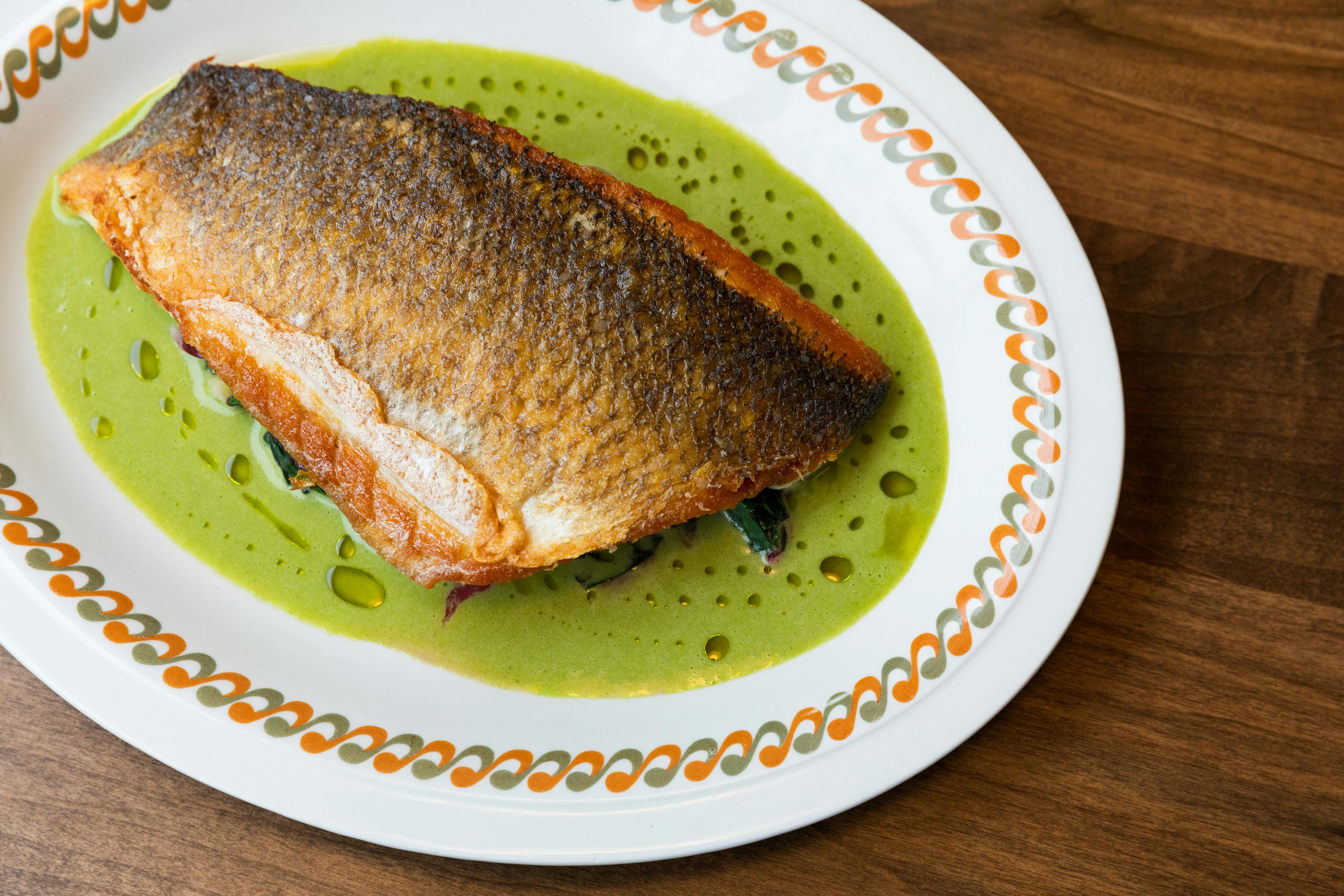
On the menu’s Cold section, such playfulness translates into East Coast oysters with pickled chilies and shallots and a lobster salad with Grana Padano, garlic chips and Bibb lettuce. In terms of Hot mains, it results in a tender filet of sea bass, pan roasted to perfection (as witnessed by the crispy, must-eat-and-lick-your-fingers skin). Bathed in a classic sauce Véronique of cream, vermouth and tarragon, the unusual accompaniments include Swiss chard, sliced red grapes and preserved lemon.
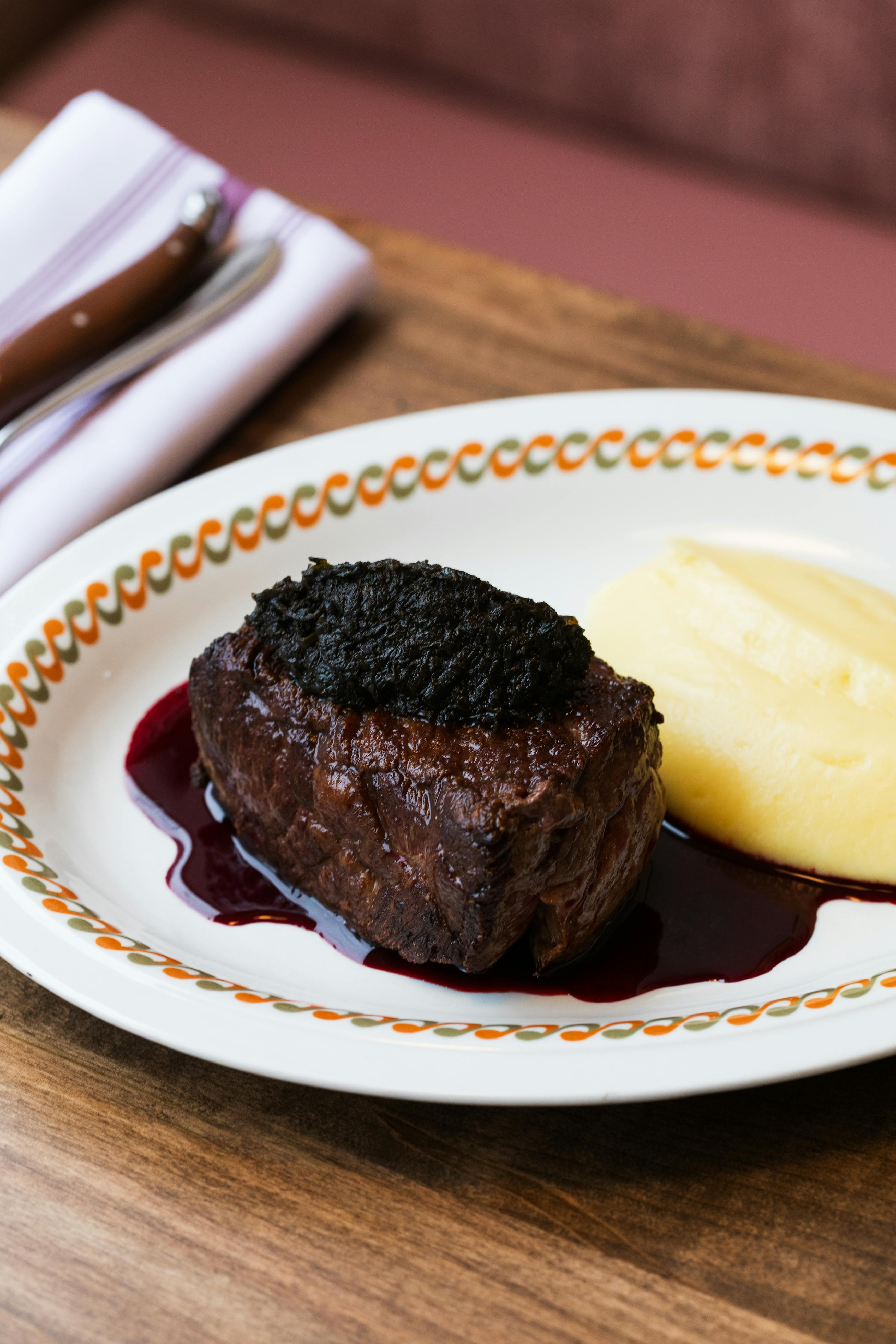
The Rosebud may not be “red meat city,” but that isn’t say that red meat doesn’t exist – and impress. Worthy of its robust Rocky Mountain allusions, the Denver Steak is a strapping hunk of beef, as seared on the surface as is it is juicy and pink inside. Blanketed with glistening black, briny minced olives, it rises out of a deep scarlet pool of beetroot jus and red wine. Because you can’t have steak without potatoes, Yap goes all out with pommes Robuchon, which sensibly adheres to its namesake French chef’s laudable philosophy that all mashed potatoes should be two parts spuds to one part butter.
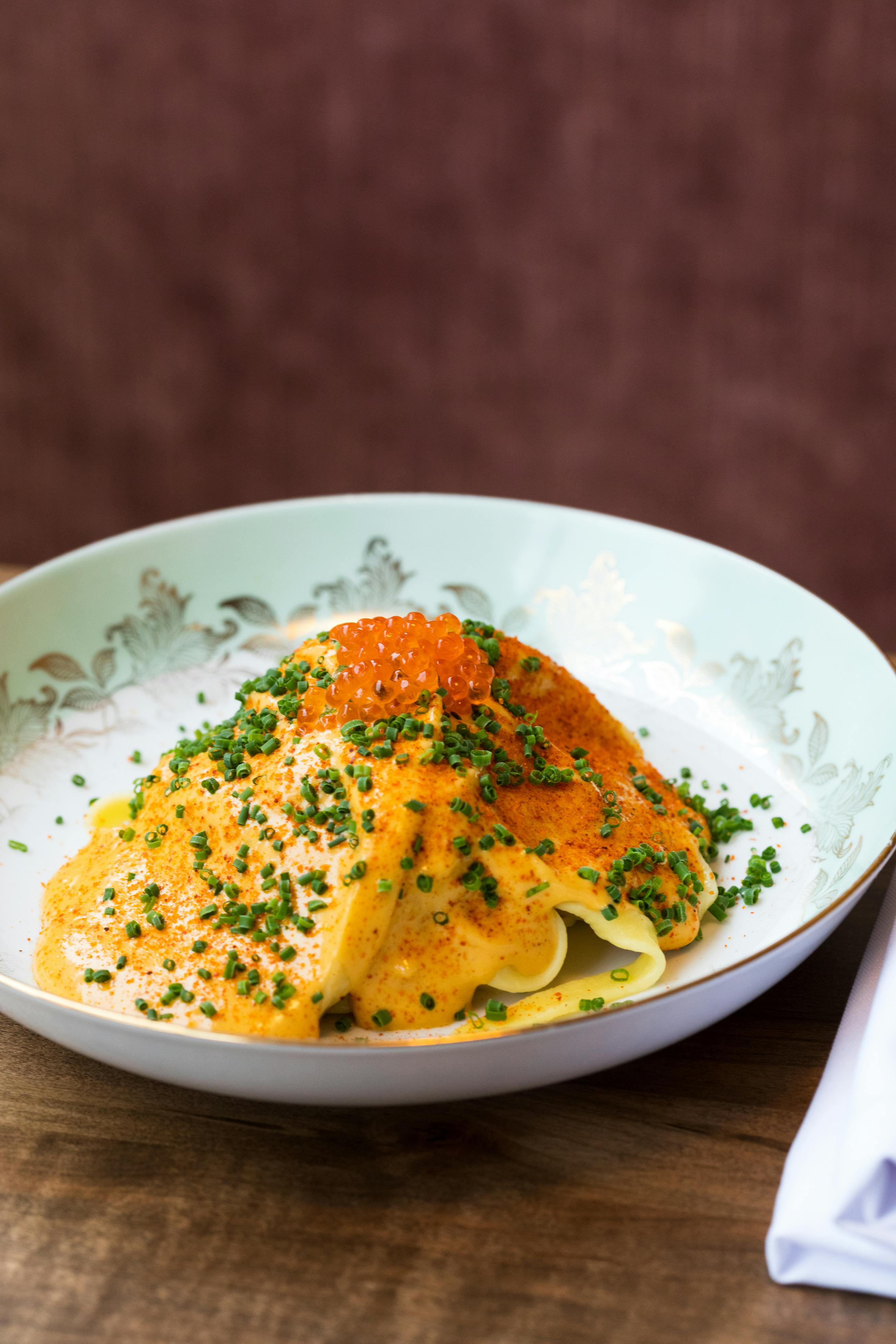
For those who aren’t in the mood for either surf or turf, there’s pasta… and oh, is there pasta! As he does with everything, Yap makes his tagliatelle by hand. It comes luxuriously anointed with a beurre blanc infused with BC-sourced uni, nitrogenated until it takes on a silky, foamy, creaminess that gets very close to heavenly. Indeed, it’s a small miracle that despite its whipped buttery richness, the sauce is equally light and aerated, imbued with the sharp taste of Parm, although no cheese is involved whatsoever. Rather it’s the maritime kick of the uni, which pushes the umami factor up to the max. Adding extra complexity is a spray of espelette peppers, orange powder, chopped chives and bright coral pearls of trout roe.
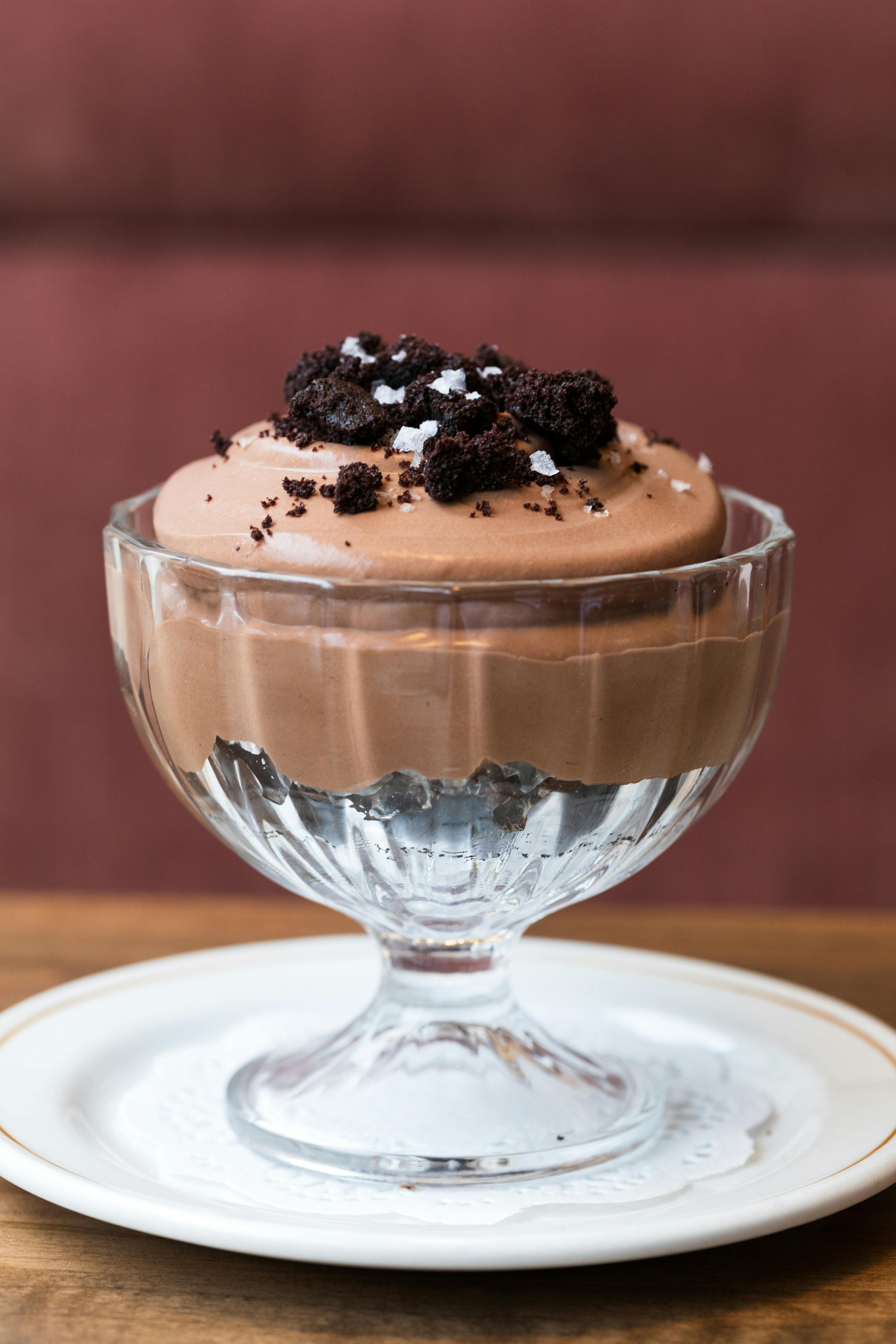
There are only two desserts at The Rosebud, both of them gentle riffs on classics: an apple tarte tatin and a dark chocolate parfait. The latter is the more diabolically decadent of the two, moist Devil’s food cake plunged into a bowl of mildly boozy amaro-infused chocolate mousse and sprinkled with crunchy chocolate crumbs. Tempering all the chocolatey-ness are drops of tart citrus gelée and flakes of Maldon salt.
To complement the menu, The Rosebud’s wine program is designed to be food-friendly. That said, in keeping with its wine bar status, the innovative wine list can easily stand on its own legs. “I still want people to be able to come in at 10pm (when the kitchen closes) and just enjoy a glass of wine,” says Tuhkunen, who devised the wine program to be “a little bit of everything for everyone.”
“Sustainable practice wine, that’s what I believe in, that’s what going to make the world a better place,” she declares, defending her focus on small producers. Although there some classic wines are featured, there are also plenty of alternate grape varieties you’ve likely never heard of, such as a very unexpected white that blends five different grapes (including a red) from Clot de l’Oum (Côte de Roussillon, France) and a rich, fruity Mencia (from Spain’s El Bierzo region).
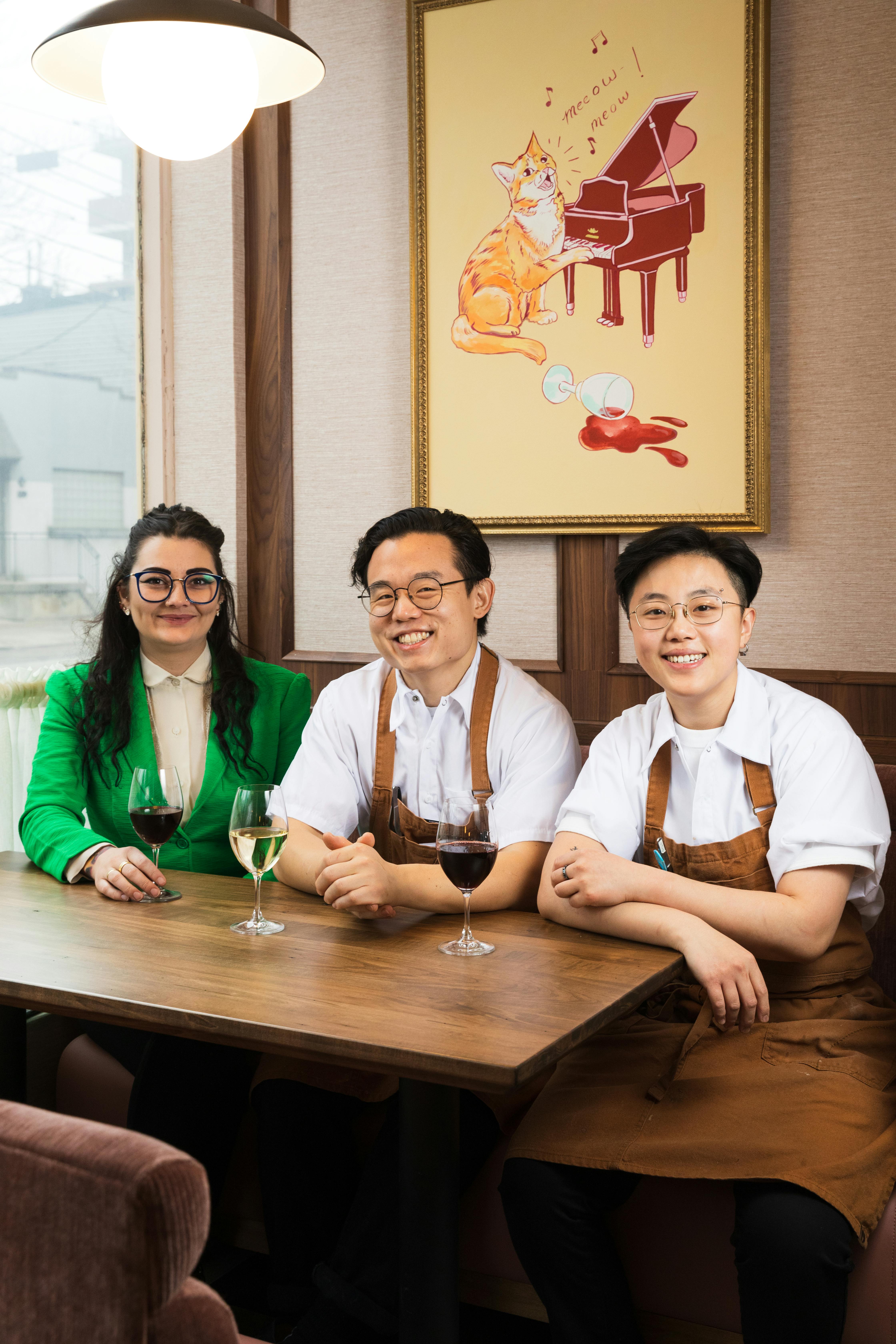
The goal is to give people an experience by providing them with “something they can’t get at the LCBO.” Which is also why, among the rapidly changing options – wines by the glass get switched up on a weekly basis – you’ll encounter bottles from a lot unsung regions: Greek, Austrian, (yes!) even Canadian, which, despite nationalistic pride, prove to be a hard sell.
“You have to convince people to try them,” says Tukhunen of homegrown vintages. “There’s a slight perception that they’re sweet or flabby, which they’re not. We have a couple of Canadian wines, including a lovely Pinot Gris and a sparkling wine, both from the Okanagan. When people hear ‘Canadian sparkling’ they’re suspicious. ‘I promise you it’s good!’, I tell them.”
Canadians appear to have more faith in our gin and beer than we do our wine. This explains why the former features in a handful of martinis and cocktails, which along with a selection of digestifs such as amaro, port and grappa, round out the alcoholic offerings.
“I’m really obsessed with gin,” confesses Tukhunen, an Australian transplant who ran a gin bar in Melbourne for five years. “I like its diversity and it’s a great way to express terroir. Canadian gins for example take advantage of Canadian ingredients.”
For The Rosebud’s subtle plays on classic cocktails, however, Tukhunen resorts to more traditional London Dry gin, which provides the foundation for its trio of martinis.
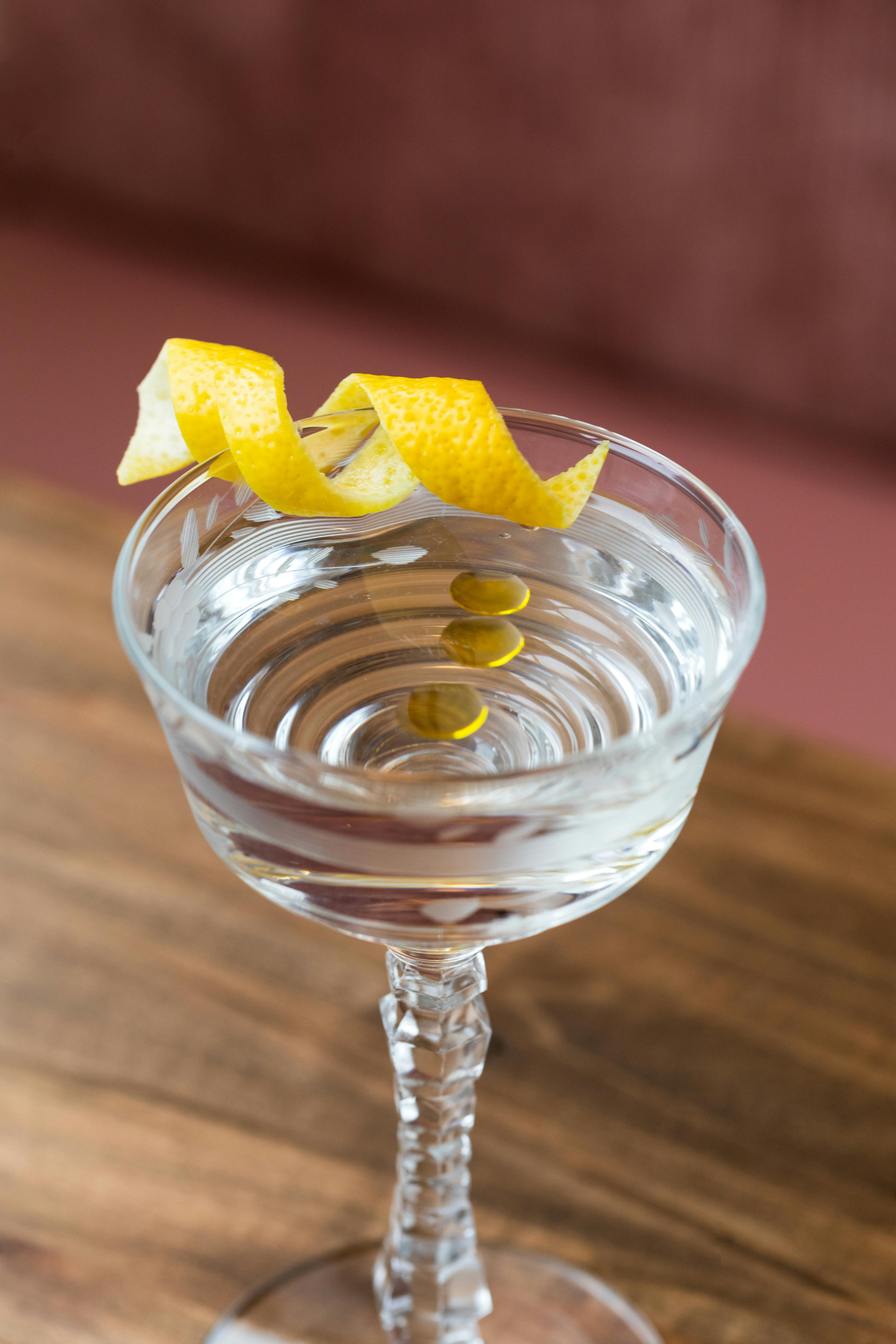
The Martini de Provence pairs gin with dry vermouth infused with herbes de Provence. Aromatic and herbaceous, it’s stirred down with a lemon twist and house-made herb oil, the latter providing a rich, silky texture.

A prettier, pinker take is the Rosé Martini. A half-and-half mixture of gin with rosé vermouth, it’s also infused with herbes de Provence and garnished with a purple sprig of lavender.
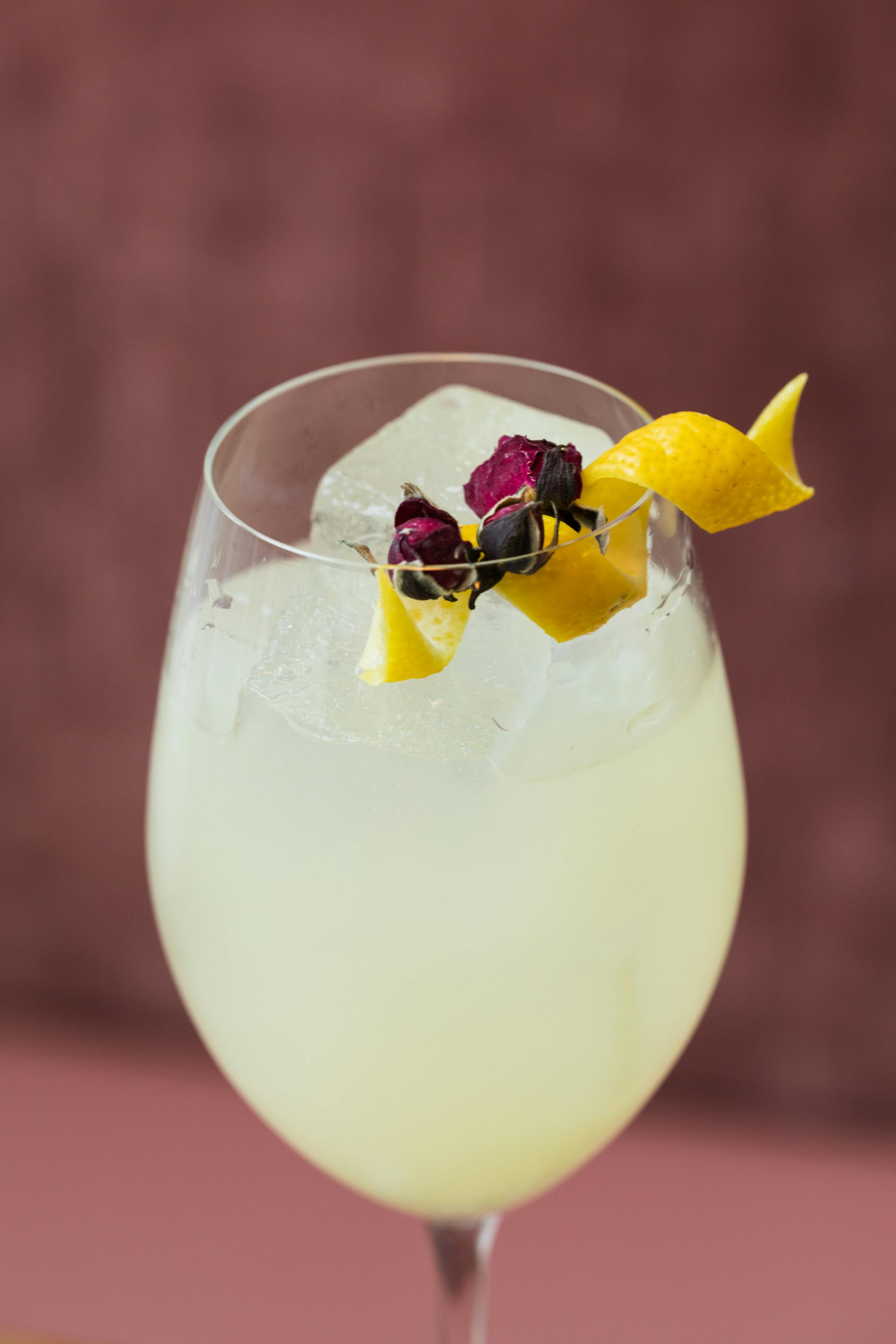
Equally classic and refreshing, but with a surprising hit of acid is La Vie Spritz. It combines Lillet with a house-made soda distilled from lemon and yuzu. A drop of rose water adds a floral hint, while keeping the drink on theme, a delicious reminder that “Rosebud” is not just a Corktown restaurant/wine bar, but also a signifier of happiness.
Recommended For You